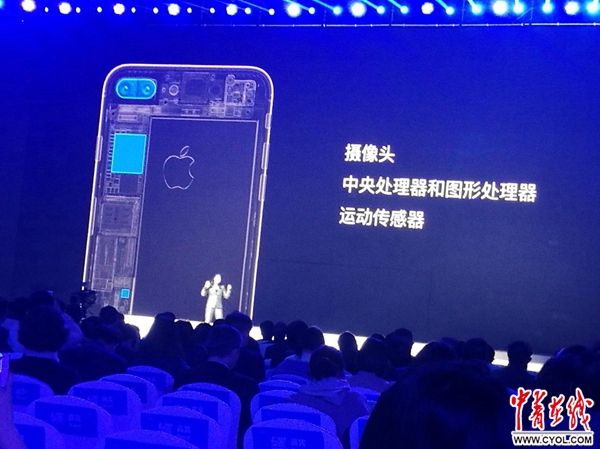The future of the Internet looks like this | 18 global Internet leading scientific and technological achievements released
On the afternoon of December 3, 2017, the 4th World Internet Conference "World Internet Leading Scientific and Technological Achievements Release Event" was held in Wuzhen. The launch event was chaired by Wu Hequan, academician of the Chinese Academy of Engineering and chairperson of the Internet Association of China.
The launch event reviewed 18 representative leading scientific and technological achievements, of which 14 were independently released, namely: Huawei Technologies Co., Ltd.’s "Huawei 3GPP 5G pre-commercial system", Arm’s "Arm security architecture", Microsoft’s "Microsoft Xiaoice – emotional computing artificial intelligence", China Satellite Navigation System Management Office’s "Beidou Satellite Navigation System", Qualcomm’s "Qualcomm realizes the world’s first officially released 5G data connection based on its 5G modem chipset for mobile end points", National Supercomputing Wuxi Center’s "Major application achievements based on’Sunway, Taihu Light ‘supercomputer system", Chinese Academy of Sciences Quantum Information With the "World’s First Optical Quantum Computer Beyond Early Classical Computers" of the Institute of Quantum Science and Technology Innovation, Tesla’s "Tesla Vertically Integrated Energy Solution", Beijing Didi Unlimited Technology Development Co., Ltd.’s "New Generation Mobility Platform Based on Big Data", Beijing Mobike Technology Co., Ltd.’s "Mobike Dockless Intelligent Shared Bike", Alibaba Group’s "ET Brain", Beijing Baidu Netcom Technology Co., Ltd.’s "DuerOS Conversational Artificial Intelligence System", Amazon’s "AWS GreenGrass" and Apple’s "AR Kit". In addition to the above 14 independent achievements, the organizing committee also jointly released 4 advanced technologies that were shortlisted, namely: Tencent’s "Tencent artificial intelligence open API", CLP Data Services Co., Ltd. and International Business Machines Co., Ltd.’s "Watson Health Helps’Healthy China ‘"The "next-generation Internet key technologies" of Tsinghua University and the "machine haptics" of the American machine haptics company.
Since July 2017, the launch event has collected nearly 1,000 leading scientific and technological achievements in the Internet field from China, the United States, the United Kingdom, Germany, France, Sweden, Ireland, Finland, South Korea and other countries, covering theories, technologies, products and business models. In accordance with the principles of fairness, impartiality, objectivity and authority, the Organizing Committee of the World Internet Conference established the "World Internet Leading Scientific and Technological Achievements Recommendation Committee" composed of 44 well-known industry experts at home and abroad. Wan Gang, Vice Chairperson of the National Committee of the Chinese People’s Political Consultative Conference, Chairperson of the Central Committee of the Zhigong Party, Minister of Science and Technology, and Chairperson of the China Association for Science and Technology, served as the honorary director of the recommendation committee, Wu Hequan, academician of the Chinese Academy of Engineering and chairperson of the Internet Association of China, served as the Chinese director, and Robert Kahn, a former US President’s Science and Technology Advisor and 2004 Turing Award winner, served as the foreign director. Voted by the recommendation committee, deliberated by the Chinese and foreign directors, and reported to the organizing committee of the conference for approval.
Huawei 3GPP 5G pre-commercial system

Huawei’s 3GPP 5G pre-commercial system, based on 3GPP unified standards and specifications, integrates revolutionary new port technology, innovative uplink and downlink decoupling technology, all-cloud architecture and end-to-end slicing technology, etc., to complete the construction and testing of end-to-end products and solutions from wireless network, bearer network, core network, chip, CPE, etc., and has reached the world’s leading level in terms of commercial maturity and product performance.
Xu Zhijun, rotating CEO of Huawei Technologies Co., Ltd., introduced that Huawei will launch a full set of 5G network solutions for large-scale commercial use in 2018 to support operators in building 5G networks around the world, so that the entire mobile Internet can move to a new level, open the era of interconnection of all things, and then undertake the historical mission of digitalization in all walks of life. At the same time, Huawei will also launch 5G-enabled Kirin chips in 2019, and simultaneously launch 5G-enabled smartphones. Of course, this smartphone is also AI, allowing consumers to enjoy the ultimate experience of 5G networks as soon as possible.
Arms Security Architecture


"From bank cards to mobile phones to cars, everyone buys an average of 2-3 Arm-based electronic devices every year." Wu Xiongang, executive vice president of Arm Global and president of Greater China, said that Arm has designed the world’s most widely used computing technology to date. Today, hundreds of billions of electronic devices around the world use Arm’s technology.
In the 25 years since ARM was founded, global shipments of ARM-based chips have exceeded 75 billion. In the smartphone industry, it is not an exaggeration to say that ARM is dominant.
Arm Security Architecture lays the foundation for the IoT industry to create more secure devices by creating a security framework that is economical, scalable, and easy to implement. Arm Security Architecture provides a framework based on industry best practices through which consistent security design can be achieved at the hardware and firmware levels, providing common rules and a more economical approach to making more secure devices.
It can solve similar problems encountered in cases by analyzing threat models; provide consistent functions and interfaces for different devices through architecture; provide diverse choices for end point customers, and then benefit the Internet of Things and related technologies and suppliers.
Microsoft Xiaoice – emotional computing artificial intelligence


Microsoft’s artificial intelligence Xiaoice, the world’s first artificial intelligence system aimed at cultivating emotional intelligence, was born in China in 2014 and today has become the largest artificial intelligence emotional computing framework system in the history of science and technology. In China, the United States, Japan, India and Indonesia, Xiaoice talks to hundreds of millions of people, learning from human emotions and trying to care for those in need. "Human emotions belong to all mankind, but Microsoft Xiaoice belongs to China," Shen Xiangyang said proudly.
Xiaoice was born in China, but is going global. Xiaoice has several "twin sisters" called Zo in the United States, Ruuh in India, and Rinna in Indonesia. They can also draw, dance, and write songs and poems. Xiaoice has had many conversations with humans, the longest of which lasted more than 29 hours.
Shen Xiangyang introduced that Xiaoice can combine technology and emotion, and the literary and artistic works he creates have begun to rival those of a person. In May this year, Xiaoice published the first collection of poems written entirely by artificial intelligence. In addition, Xiaoice can also independently complete an audiobook. Compared with humans, its creation cycle is short, the quality is good, and the cost is low.
Beidou satellite navigation system

"The birth of satellite navigation has completely changed the world. In this change, China is not a bystander, but a practitioner and an innovator," said Ran Chengqi, director of the China Satellite Navigation System Management Office.
The Beidou satellite navigation system is a satellite navigation system that China has built and operated independently in order to meet the needs of China’s security and economic and social development. Today, Beidou has been widely used in transportation, marine fisheries, hydrological monitoring, weather forecasting, power dispatch, emergency search and rescue and other fields. In addition, the Beidou foundation covering the whole country has been widely integrated with the Internet, cloud computing, and big data, and "Beidou +" is spurring endless innovation and change.
Qualcomm achieves world’s first officially released 5G data connection based on its 5G modem chipset for mobile end points

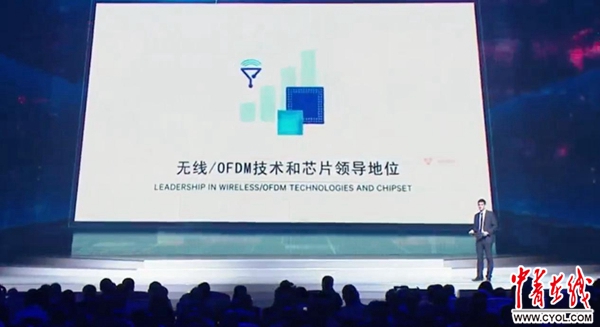
"5G calls have been successfully tested in 2017, it has set a record, and the download speed has reached 100 trillion in 1 second. I want to say that 5G can be a new frontier, it will have many applications, and it will also bring new experiences to customers, greatly improve the user’s work ability, and at the same time, the speed will be faster, the quality and signal will be more stable. We will continue to optimize 5G technology to give full play to the role of mobile end points." Serge Verinaig, senior vice president of Qualcomm, introduced that this technology means that 5G new radio millimeter wave, a new cutting-edge technology in the mobile field, can be realized by relying on the 5G new radio standard, which will further improve the user experience and significantly improve the network capacity. Qualcomm will launch the first batch of 5G applications in 2019.
Major Application Achievements Based on’Shenwei, Taihu Light ‘Supercomputer System
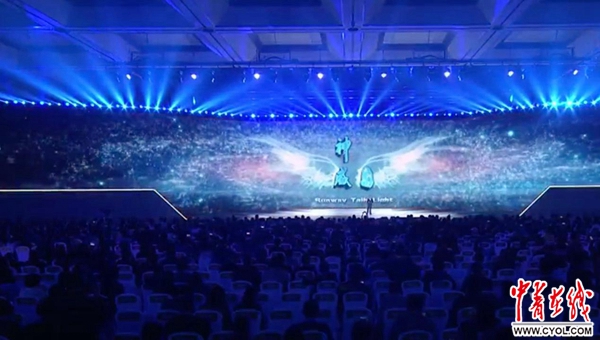
Yang Guangwen, a professor at Tsinghua University and director of the National Supercomputing Wuxi Center, introduced that the Tsinghua team has worked closely with research and development teams at home and abroad. So far, 17 applications have been completed, and many international achievements have been achieved, establishing China’s international status in the field of supercomputing. Last year, the "Sunway Taihu Light" supercomputing team made full efforts and won the "Gordon Bell Award".
At present, the "Sunway TaihuLight" supercomputer has completed more than 2 million tasks and supported more than 100 applications, covering almost all important application fields of high-performance research. New miniaturized products have been introduced to the market, and the next step will be to develop large-scale software, build an innovative application simulation platform, and support the country’s innovative construction, especially in the manufacturing industry.
In the future, the supercomputer center will continue to make great efforts to promote the application of the "Sunway Taihu Light" ecological environment.
The world’s first optical quantum computer that surpasses early classical computers
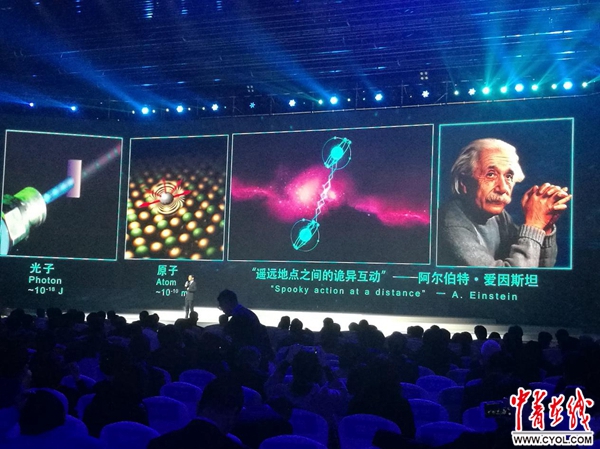
The optical quantum computing prototype built by Pan Jianwei’s team at the University of Science and Technology of China for the multi-photon "Bose sampling" task is not only at least 24,000 times faster than similar experiments in international peers in terms of "Bose sampling" speed, but also 10-100 times faster than the first tube computer and the first transistor computer in comparison with classical algorithms. It is the first single-photon-based quantum simulator in history that surpasses early classical computers. Quantum computers can be used to solve problems such as code breaking and big data analytics.
Lu Chaoyang, a professor at the Institute of Quantum Information and Quantum Technology Innovation of the Chinese Academy of Sciences, introduced that by the end of this year, the team will launch a high-precision cloud computing platform of ten superconducting qubits, allowing the public to experience quantum computing online. Recently, the team has achieved superentanglement of 18 optical qubits, further breaking the world record in this field.
Tesla Vertically Integrates Energy Solutions
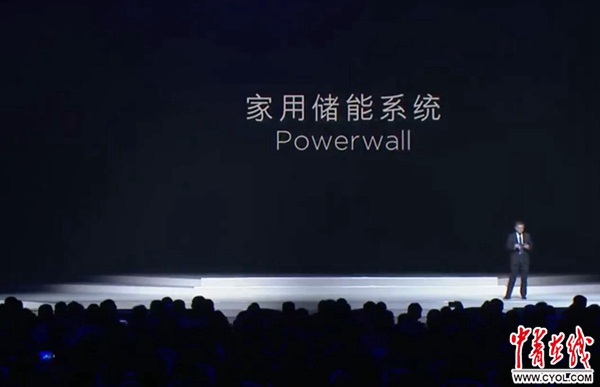

Tesla’s global vice president Yuxiang Ren introduced that industrial enterprises and grid operators are now using electromagnetic technology on an unprecedented scale, and Tesla is committed to accelerating the world’s transition to sustainable energy. To create an overall sustainable energy ecosystem, Tesla has designed a series of unique products, including Solar Roof, Solar Panels, Powerwall and Powerpack, which are combined to form a vertically integrated capability solution. This solution integrates the three processes of energy acquisition, generation, storage and use, which can meet the needs of home enterprises and utilities. Solar Roof and Solar Panels can be used for energy harvesting, Powerwall and can provide clean and reliable cheap energy storage.
Tesla Energy Solutions is currently being rolled out in 18 countries.
A new generation of mobile transportation platform based on big data

According to Cheng Wei, founder, chairperson and CEO of Didi Chuxing, 60% of the world’s ride-hailing orders now take place on Didi. The new generation of mobile transportation platform based on big data has provided comprehensive travel services for more than 440 million users. The platform uses big data intelligent processing and decision-making technology, powerful computing power and communication facilities to research and develop mobile travel service platforms.
As the decision-making center of the platform, Didi Brain is an intelligence system that makes big data decisions for the platform. Maximize the use of transportation capacity through technologies such as big data, machine learning and cloud computing, and make optimal decisions to improve urban transportation efficiency and facilitate people’s transportation.
Mobike dockless smart shared bicycle

Wang Xiaofeng, co-founder and CEO of Beijing Mobike Technology Co., Ltd., introduced that Mobike is the world’s first smart shared bicycle based on the Internet of Things and mobile Internet. We have also developed the world’s first smart lock based on the Internet of Things, which allows us to track the use of each vehicle through the Internet of Things and mobile Internet technologies we have mastered, including global satellite positioning technology, to ensure the safety of users and improve the turnover efficiency of each vehicle.
As of October 2017, Mobike has entered more than 180 cities in 9 countries around the world, operating more than 7 million smart shared bicycles, with more than 200 million users worldwide.
Alibaba Cloud ET Brain

ET Brain is a super artificial intelligence developed by Alibaba Cloud, which is specially designed to solve and explore some difficult problems that cannot be solved by the human brain in social and economic development. It has the characteristics of multi-dimensional perception, global insight, real-time decision-making, and continuous evolution.
At present, ET City Brain has been widely used in urban governance, real-time traffic sensing and optimization, saving tens of millions of citizens in China, Malaysia and other countries up to about 10% of traffic travel time, opening up green channels for emergency vehicles (such as ambulances) in real time, and reducing travel time by 50%. At the Yunqi Conference in October this year, Hangzhou’s City Brain reduced the arrival time of 120 ambulances by half by automatically deploying traffic lights.
DuerOS conversational artificial intelligence system

Zhang Yaqin introduced that DuerOS is a conversational artificial intelligence system launched by Baidu, which allows users to communicate with natural language interaction patterns and devices. The system leads the world in deep learning, natural language processing, multi-round dialogue and other technologies.
The system allows the device to understand your voice commands, and can realize the operation of more than 100 functions in 10 categories such as audio and video entertainment, data query, life services, and travel conditions. At present, the system has been widely used in audio, refrigerators, cars, and other scenes and equipment that are closely related to people’s daily lives.
AWS Greengrass

AWS Greengrass is software that extends the capabilities of the AWS Cloud to on-premises devices, enabling them to gather and analyze data closer to the information source, while enabling devices to communicate securely with each other on the local network.
AWS Greengrass users can program devices to filter device data locally and transfer only the data required by the application to the cloud, reducing the amount of original data sources transferred to the cloud, reducing costs, and improving the quality of data sent to the cloud.
AR Kit

